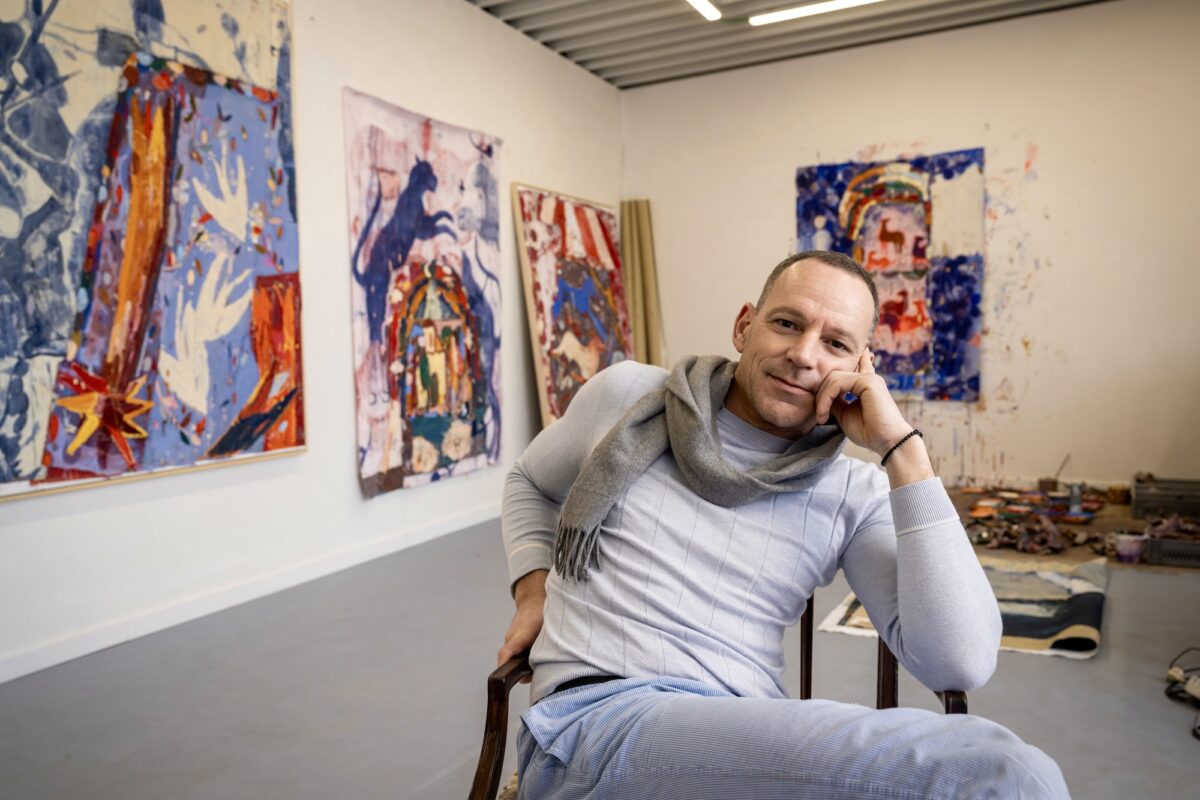
In his latest show with London-based gallery, Arusha Gallery, Belgian artist Gommaar Gilliams welcomes viewers into a vibrant and dynamic narrative that celebrates the natural, the familiar, and the magical.
Inspired by his passion for global art history and our cultural history, Gilliams crafts this realm that exudes optimism yet conceals a subtle undercurrent of profound yearning. Through this series of works, the artist encourages audiences to not only reflect on the past but examine our collective memory. His work prompts the notion of retrospective contemplation, by offering a unique opportunity to explore the intersection of personal and shared histories.

Chard Adio: It’s great to have you back in the UK, and this time with a solo show. I’ve been engaging with your work for a very long time. My first encounter with the work was at Untitled Art Fair in Miami, 2022. It was last year when we finally got the chance to meet each other, and it was at Fores Project, where you did a residency. I then saw your work in Paris at Galerie Italienne during last year’s Paris Art Week, and that was a solo show. So it’s been a journey, and I think the first question I have for you is the title of the show, The Ballad of my Lover’s Boat, why such a title, and what’s its significance?
Gommaar Gilliams: So both the gallery and I chose the title of the show. Whenever I think of a title, it usually comes during the middle of the paintings or after, because the work inspires the title. For this particular show, there were 10 different variations. I sent the different titles to the gallery, and we just went back and forth until we ended up with this one. I usually come up with the title by myself, but it was different this time, it was a collaborative process, and the gallery was really engaged. In terms of its significance, well… I see the title as this poetic symbol. It encapsulates my love for painting, and it’s a tribute to my admiration of art history. It also serves as this personal reminder of the emotive language art possesses. It isn’t supposed to summarise the meaning of all the paintings in the show. It is the opposite, it is there to provide you with this lens in which you can look at the paintings. We chose the title to invoke this familiar feeling since it draws from our collective memory. So when you hear this title, you should automatically be taken to this recognisable place.

CA: It’s interesting you say this, because it’s as if the title sets the scene for this show—it gives it this medium that allows it to be open to different interpretations.
GG: Exactly, it sets the scene! I as the artist guide you in a certain direction, and then I leave it up to you. But at the same time, I want to make you aware that you’re about to experience a form of storytelling. You’re about to engage with something that deals with our collective memory. So with this specific title, you might not have seen it before, but somewhere in your subconscious you have felt this feeling that the title invokes.
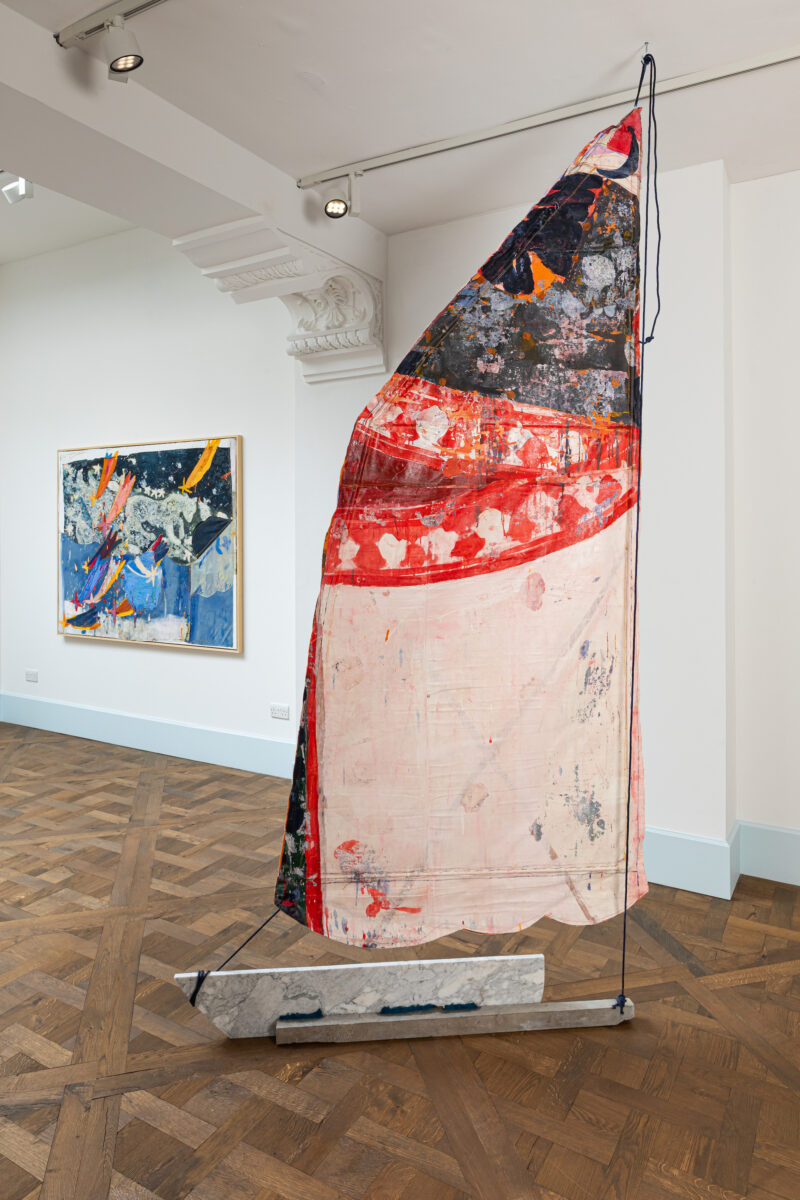
CA: And with the work that is in this show, how is it different from the previous work?
GG: Different isn’t the word I would use. It is more of a continuation of what I have done previously. When I was creating the paintings for this show, I didn’t feel this urge to drastically reinvent myself, I just went away and made the work. I used previous ideas and motifs from other shows, and I think a good analogy is I was like a builder—I was using certain tools from my toolbox. The motifs I was using were like tools, and I think that analogy speaks to me as an artist—they were these vehicles—guiding your thinking and leading you to certain ideas. In general, when I first use a new motif it’s a bit daunting. I’m trying to figure out how I can use it to solve these “problems” that appear in the work as I am creating them. But once I get over those hurdles, the motif now becomes part of my artistic arsenal, or artistic toolbox. The repetitive use of that motif makes the story I am trying to tell become clearer, and I am not working against my instincts.
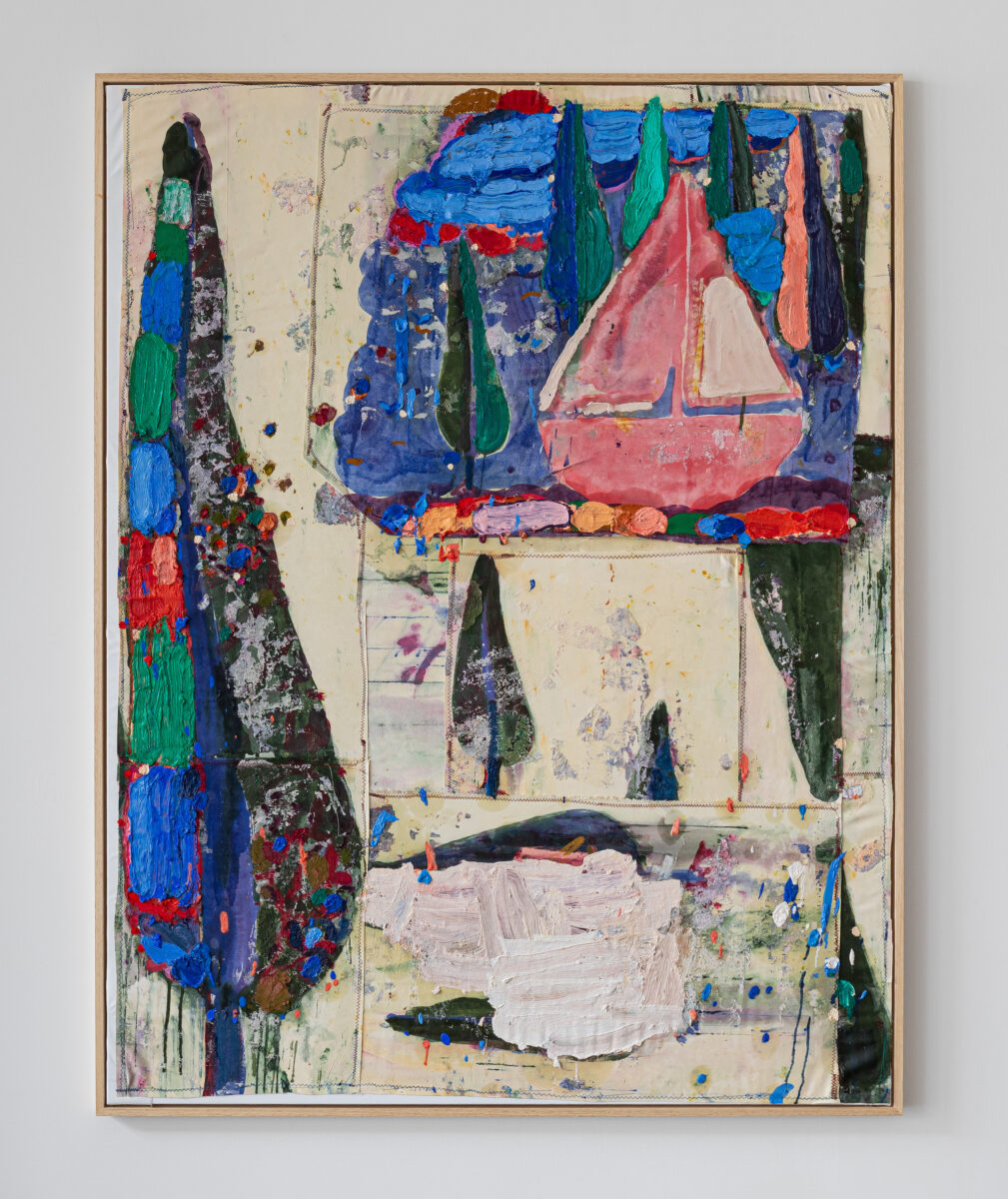
CA: You’ve started to allude about storytelling, and this is a massive part of your practice. Tell us about the process when it came to developing the concept for this show?
GG: For this show, I wanted to pull from the idea of telling stories. My process didn’t involve me sitting down and thinking things through, it all happened organically and intuitively. While I was creating the work, I was taking ideas from ancient mythology, astrology, fables and allegories. All these different things that form our universal language were inspiring me, and I wanted to infuse them into the story of the work. For example, when I did a residency at the Fores Project, I was looking at some medieval manuscripts, and the composition of those manuscripts were so intriguing because you had this image within an image. For a period, I took inspiration from this style, and worked it into other shows during that year, and for this show I brought it back. However, that’s just one specific example. I think as a whole, the story for this show came from all areas of art history, and even our cultural history.
CA: And physically, how did you go about when you were creating these paintings? Because I can see an array of different materials being used.
GG: Multifaceted is how I would describe the process. Just from initially seeing the work you can tell there’s many layers to it. From the stitching of the fabrics to the oil paint and oil sticks, it’s a massive balancing act, and things need to be done in a certain way. I need to be in control because there are so many of what I call “problems” that I need to resolve. But I like these “problems”, and I like introducing them into the work. If the paintings were flat, and they didn’t have these different textures and layers, then my work wouldn’t have this presence, it wouldn’t have this aura. By using this process, my work has this timelessness aspect—you wouldn’t be able to tell if it was made this year or decades ago. Also, I think this distressed and damaged aesthetic gives the work this unexplainable charm—it’s both a relic of the past and the present—you sort of want to wrap it around you like a blanket, or even reach out and touch it.
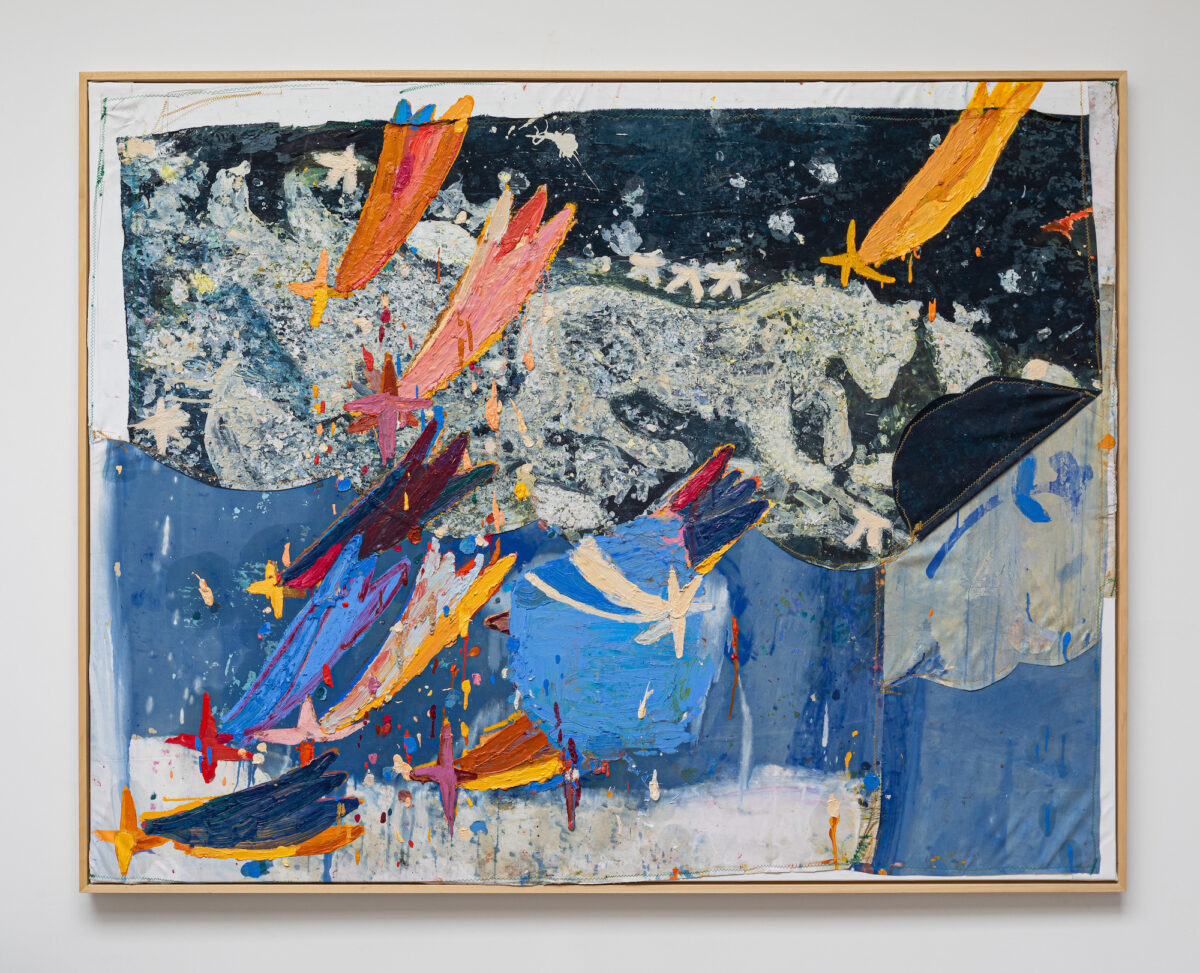
CA: Let’s now talk about colour, because I see it as another crucial aspect to your practice—your work is known for having this vibrancy. So how do you think about colour, and how does it contribute to the overall storytelling in the work?
GG: I see my use of colour as something that is constantly evolving. When I start a painting, I get these ideas of which colour to use and how things will work. Similar to the motifs, I see colour as one of my tools. Colour truly informs how I will tell a story in a certain painting, and the direction in which I want to take the audience. A while ago I was looking at the Disney film, Dumbo, and what caught my eye was its colour pallet because it was so different compared to other animated films that came before it. I saw this particular train scene, and I just felt this feeling—I was suddenly taken to this different place. So to me, colour is a crucial vehicle in storytelling, as it gives a piece of work this inherent characteristic.
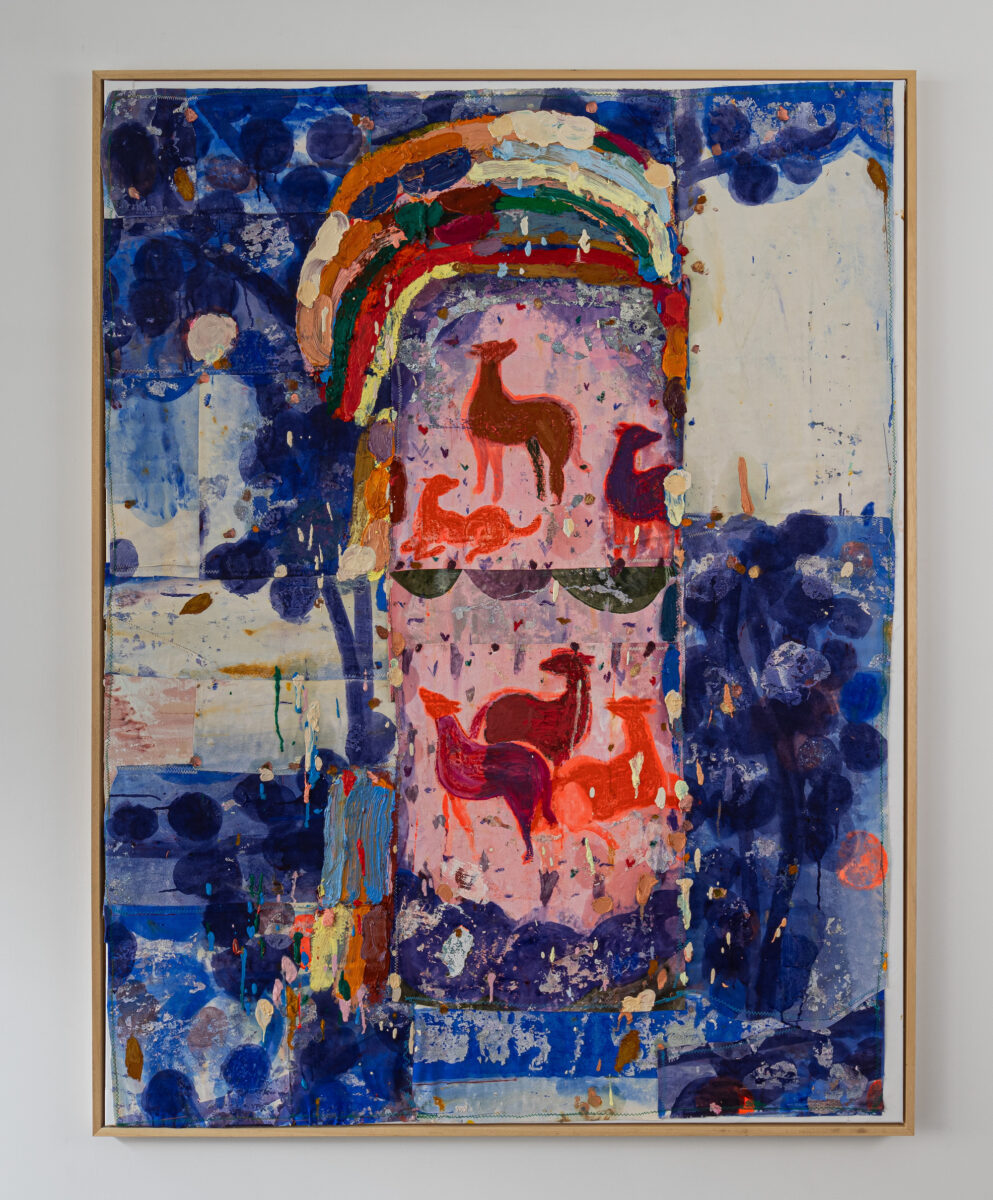
CA: And with everything that’s been discussed so far, what message do you want viewers to leave with after seeing the show?
GG: I think I want people to understand this collective language we all share. I’m not much of a speaker, and I can’t really articulate myself. But what I can’t express vocally, I can express it visually and through the paintings because that’s my language. I think with the work I have created, you will feel this sense of longing and connection, and also this duality. The works have this indescribable presence which can’t be summarised into words, but at the same time instil you with this nostalgic feeling. So, I want people to engage with the work: you can laugh with the work, cry with the work, but above all, feel this universal connection because as humans we have always used images to connect with each other.
Gommaar Gilliams, The Ballad of my Lover’s Boat, 8th – 30th March 2024, ARUSHA





